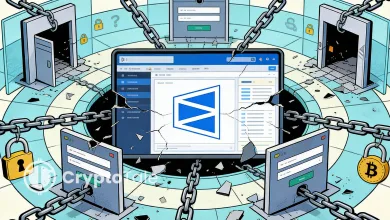Ripple RLUSD Expands Role in Tokenized Institutional Finance

- BlackRock BUIDL, valued near $2 billion, offers RLUSD redemptions for instant liquidity.
- VanEck VBILL expands treasury exposure with RLUSD support across blockchains.
- Ripple and Securitize push tokenized assets toward automated liquidity and settlement.
Marking an innovative step, Ripple has partnered with Securitize to announce a new smart contract that enables direct redemption of tokenized fund shares into Ripple USD (RLUSD). Notably, the contract allows holders of BlackRock’s USD Institutional Digital Liquidity Fund and VanEck’s Treasury Fund, Ltd. (VBILL) to instantly exchange their shares for RLUSD, eliminating traditional redemption delays.
Tokenized Funds Gain Direct Stablecoin Off-Ramp
This contract represents yet another opportunity for BUIDL or VBILL investors seeking liquidity to exit. BlackRock’s BUIDL, worth approximately $2 billion, operates across blockchains and has around 90 qualified investors. Under this new arrangement, the participants can enjoy liquidity in the form of RLUSD without any time limit.
Initiated in March 2024, BlackRock’s BUIDL was the first tokenized fund of the company implemented on a public blockchain. Just under a year later, it passed $1 billion AUM, a clear indicator of investors rushing toward tokenized investment products. VanEck brought VBILL to the market in May 2025, giving tokenized exposure to U.S. Treasury-backed assets on Avalanche, BNB Chain, Ethereum, and Solana.
According to Ripple, RLUSD integration delivers immediate stable transfers for tokenized funds and enhances investor access to on-chain yield opportunities and DeFi strategies. RLUSD redemptions for BUIDL are live, with VBILL support expected within days.
Ripple and Securitize Collaboration
Jack McDonald, Ripple’s senior vice president of stablecoins, said the launch demonstrates progress in bridging traditional finance with digital assets. “Making RLUSD available as an exchange option for tokenized funds is a natural next step as we continue to bridge traditional finance and crypto,” he noted. He described RLUSD as designed for institutional adoption, offering regulatory clarity, stability, and practical utility.
Carlos Domingo, Co-Founder and CEO of Securitize, emphasized the significance of the integration. “Partnering with Ripple to integrate RLUSD into our tokenization infrastructure is a major step forward in automating liquidity for tokenized assets,” he said. Domingo added that real-time settlement and programmable liquidity can now reach a new class of compliant, on-chain investment products.
Securitize reports that tokenized real-world assets (RWAs) on its platform have reached nearly $4 billion in value. The RLUSD integration strengthens that ecosystem by automating redemption processes and linking funds more closely with blockchain-native liquidity.
Institutional Adoption and Regulatory Considerations
Ripple launched RLUSD in early 2025 as a stablecoin designed for enterprises. In June, the Dubai Financial Services Authority approved its use in the Dubai Land Department’s real estate tokenization program. This approval provided regulatory grounding for RLUSD in asset tokenization projects.
However, there are still major regulatory issues. The fact that RLUSD is used as a settlement medium touches on securities, custody, banking, and payments laws. In certain areas, regulators may demand RLUSD to operate as either money or e-money, which would cause licensing, segregation of reserves, and capital requirements.
It follows that fund operations would then be increasingly based on programmable assets that never get off the blockchain infrastructure, thereby collapsing off-chain movements of fiat into on-chain transactions.
Related: Ripple Engineer Unveils Major XRP Ledger Optimization Plan
A New Phase in Tokenized Finance
Ripple’s integration with BlackRock and VanEck represents a shift in how funds handle liquidity. Instead of relying on delayed fiat settlements, investors now redeem directly into a stablecoin with constant availability. This change lowers friction, reduces reconciliation requirements, and allows investors to transition funds into DeFi environments seamlessly.
By embedding RLUSD into institutional fund infrastructure, Ripple has positioned its stablecoin as more than a payment asset. It is functioning as a settlement layer underpinning tokenized assets. Whether regulators support this development could determine how quickly institutional tokenization scales.




